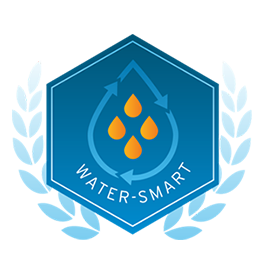The Ecolab Smart Water Navigator:
A Practical Roadmap to Better Water Management

Water Scarcity is a Growing Threat to Business.
But with the Ecolab Smart Water Navigator, companies can build resilience and foster growth, facility by facility.
The Ecolab Smart Water Navigator is a practical roadmap to better water management in an era of ever-scarcer water resources. Based on a straightforward, 13-question assessment, companies will be able to see exactly how each of their facilities is doing when it comes to water management. The Smart Water Navigator also delivers a guide tailored for each individual facility, with a series of specific action steps to improve its water management practices.
The new online tool, launched on March 14 in New York City, is free-of-charge and publicly available at www.smartwaternavigator.com. It can be used by any company, regardless of industry, whether it manages one site or hundreds, and will help corporations save water and money.
“The UN projects that we’ll have a 40 percent freshwater shortfall by 2030 if we don’t take action soon,” said Emilio Tenuta, Ecolab’s VP of Corporate Sustainability. “It’s time for companies to make sure that their sites around the world are ready. At the same time, if we do this at scale, we’ll help prevent a water crisis down the road.”

Getting Water-Smart
With economic growth, population growth and climate change contributing to resource constraint, water scarcity is a global problem. But because every location and every watershed are different, the solutions are local.
That’s where many corporate water users find themselves stumbling today. A growing number of them have water reduction targets, but more often than not, good intentions fail to produce real results on the ground. There is a disconnect between corporate headquarters and the individual facility level, where site managers and their teams lack clear direction, expertise and the tools to reduce their facilities’ water usage.
The Smart Water Navigator aims to fix that disconnect by focusing on individual facilities and delivering tailored solutions for each specific location. Using a company dashboard, users can sort their facilities by geography, water-stress level and current water management performance. This makes it easier to prioritize vulnerable sites and allocate scarce investment dollars where they make the greatest difference.
Each facility is placed on the Water Maturity Curve, which visualizes its state of water management in four easy-to-understand levels. A facility at the very beginning of its journey is “Untapped.” One that is fully water-mature is “Water-smart.”
Using the industry tailored guide for their own facility, site managers can take the appropriate steps to move up to the next level on the Water Maturity Curve. That can include assigning clear accountabilities for water management, informing site targets, building closer collaboration on water issues with the surrounding community and adopting best practices that range from fixing leaks and turning the water off on the weekend to installing internet-connected smart water meters and sophisticated water reclaim systems.

Lower Impacts, Higher Returns
As a facility moves up the Water Maturity Curve, the benefits accrue. “Saving water is necessary because of growing water scarcity, but even if that wasn’t a factor, it just makes plain business sense,” said Emilio Tenuta. “You’ll save money, work more efficiently and become more productive.”
Because water is heavy and needs to be pumped, heated, cooled and treated for commercial use, the money savings not only come from reduced water bills, but also from lower energy usage. That means saving water also contributes to achieving climate goals, because using less energy leads to lower greenhouse gas emissions.
In a world where water scarcity is the new normal, corporate water users will also reap reputational benefits from smarter water management. They’ll lessen their impacts on local communities and working closely with the local community on water stewardship, they’ll gain respect as good corporate citizens.
Because the Smart Water Navigator helps companies focus their water reduction efforts on facilities in the most water-stressed regions, they’ll also do their part in beating back the projected 40 percent water shortfall by 2030. That must happen at the local level, because a gallon of water saved in a water-rich location doesn’t deliver the same positive results as one saved in a water-stressed place.
“In the end, you can’t see these things as separate issues,” said Tenuta. “Nobody wants to end up in a scenario where businesses are at odds with their communities because everybody is competing for the same water resources. We want to make sure companies can keep growing and creating wealth in a more water-scarce world, but at the same time, every business wants to contribute to a higher goal: enough clean, affordable water for everybody who lives on this planet.”


